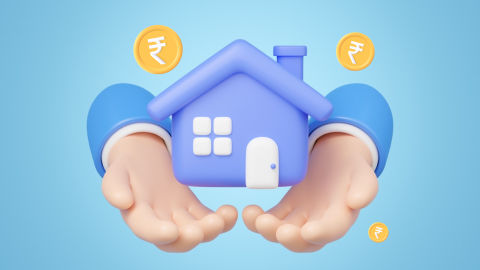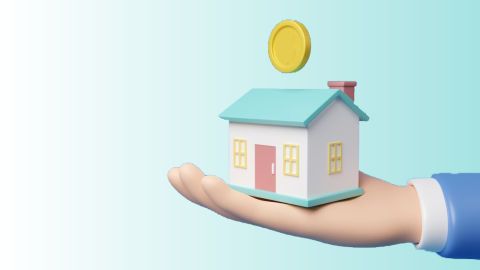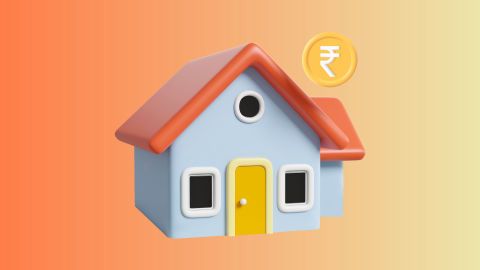The WDV full form is Written Down Value, a method that goes beyond mere calculations. It has real-world significance that can influence your financial decisions, whether you are an individual or a business. For example, during financial challenges such as sudden cash flow shortages, the WDV method becomes highly relevant. It directly impacts the valuation of assets you may consider using as collateral, such as your property.
Recognising the importance of leveraging your assets during such times, Bajaj Finance offers an ideal solution: the loan against property. This option allows you to unlock substantial funds while still retaining ownership of your property. With Bajaj Finserv Loan Against Property, you gain a versatile financial resource, empowering you to confidently navigate through various financial challenges and seize new opportunities.
What is written-down value?
Written-down value refers to the value of an asset after deducting depreciation or amortisation. In simple terms, it shows the current accounting worth of a resource owned by a company. This adjusted value is reported on the company’s balance sheet as part of its financial statements.
How does Written Down Value (WDV) work?
The Written-Down Value (WDV) method is a way to calculate depreciation by reducing an asset's value by a fixed percentage each year over its useful life. The percentage is determined based on the asset's expected lifespan.
Here is an example of how the WDV method works:
Suppose a company buys a piece of equipment for Rs. 1,00,000 and estimates its useful life to be 10 years. The company decides to apply the WDV method for depreciation.
The company calculates the annual depreciation by dividing the asset's original cost (Rs. 1,00,000) by its useful life (10 years). This results in an annual depreciation expense of Rs. 10,000.
Each year, the company records a depreciation expense of Rs. 10,000 and reduces the asset’s value accordingly. At the end of the first year, the WDV of the equipment would be Rs. 90,000 (Rs. 1,00,000 original cost minus Rs. 10,000 depreciation).
This process continues each year, with the WDV of the equipment decreasing by Rs. 10,000 annually. By the end of the 10th year, the WDV would be Rs. 0, as the entire Rs. 1,00,000 cost would have been depreciated.
As assets depreciate over time through WDV, their book value may decline—but their market value might still hold strong. This is where your property becomes an asset in a different sense. You can unlock its true potential with a loan against property and meet urgent financial needs without selling your property. By using your property as collateral, you can unlock access to large funds of up to Rs. 10.50 Crore*—it is a smart way to manage your finances with ease! Get funds within 72 hours* of approval.
Importance of written down value (WDV)
The WDV method of depreciation is crucial as it provides a more accurate book value of an asset. It takes into account the fact that an asset’s ability to generate revenue decreases over time, thus reducing its value. This method is widely used in India and is mandated by the Income Tax Act.
What is the calculation method of Written Down Value (WDV)?
The calculation of Written Down Value (WDV) involves a specific formula:
R = 1 - (s/c)^(1/n)
In this formula,
- s represents the scrap value at the end of the period n.
- c is the current Written Down Value.
- n is the useful life of the assets.
Once the rate of depreciation is calculated, it is applied using the WDV depreciation formula. This involves multiplying the depreciation rate (in percentage) by the Written Down Value at the beginning of the year. The result gives the depreciation amount for that year. The same process is repeated annually to compute depreciation and update the asset’s Written Down Value.
Once the Rate of Depreciation is calculated, it is used to determine the depreciation for the year. This is done by multiplying the rate (in percentage) by the Written Down Value at the beginning of the year. The result gives you the depreciation for that year. This process is repeated each year to calculate the depreciation and update the Written Down Value of the asset.
Noticing your assets’ value shrink year after year? That’s WDV at work. But instead of just watching numbers drop, consider monetising your real estate asset. With a Bajaj Finserv Loan Against Property, you can raise funds based on your property's market worth while still retaining full ownership. With a Bajaj Finserv Loan Against Property, you can unlock high-value funding at competitive interest rates. Whether it is for medical emergencies, business growth, or personal goals, your property empowers you to access the resources you need with ease. Don’t wait—Get our loan against property of up to Rs. 10.50 Crore* and turn your asset into a solution!
Difference between written down value (WDV) method vs. straight-line method (SLM)
Depreciation is commonly calculated using either the Written Down Value (WDV) method or the Straight-Line Method (SLM). Both approaches differ significantly in their impact on asset valuation, taxation, and financial reporting.
Feature |
Straight-Line Method (SLM) |
Written Down Value (WDV) |
Depreciation amount |
Fixed amount charged every year. |
Depreciation decreases each year as it is applied on the reduced balance. |
Impact on book value |
Asset value reduces evenly over its useful life. |
Asset value declines sharply in the initial years and slows later. |
Tax benefits |
Provides equal tax benefits annually. |
Allows higher depreciation in early years, lowering taxable profits upfront. |
Suitability for asset types |
Ideal for buildings, infrastructure, or assets that depreciate uniformly. |
Best suited for machinery, vehicles, and electronics that lose value faster initially. |
Realistic asset valuation |
Less reflective of actual wear and tear, since assets rarely depreciate evenly. |
Closely mirrors real depreciation, as assets typically lose more value in early years. |
Impact on financial statements |
Profits remain steady because depreciation is evenly spread. |
Profits appear lower in the early years due to higher depreciation but improve later. |
Cash flow considerations |
No major cash flow advantages since deductions are uniform. |
Improves cash flow initially through higher tax savings in early years. |
Complexity |
Easy to calculate, as the depreciation charge remains constant. |
More complex, requiring recalculation each year on the reduced balance. |
Final value of asset |
Can reach zero by the end of its useful life. |
Never reaches zero, as depreciation is always applied on the remaining balance. |
International preference |
Widely used under IFRS and GAAP for global reporting. |
More common in India and certain tax-driven systems. |
Tax rules for written down value in India
In India, depreciation under the WDV method is applied at prescribed rates for different asset classes, impacting taxable income and financial reporting.
Advantages of Written Down Value (WDV) method
- More accurate: The written down value method of depreciation provides a more accurate representation of an asset’s value over time.
- Tax benefits: Since this method results in higher depreciation in the initial years, it can lead to tax benefits for businesses.
- Reflects reality: The WDV method of depreciation better reflects the reality of asset usage, as assets are often more productive in their early years.
- Less complex: Compared to other methods, the WDV method is less complex and easier to understand and implement.
- Widely accepted: The WDV method is widely accepted and used, especially in India, making it a standard practice.
Disadvantages of Written Down Value (WDV) method
- Lower profit: Since depreciation is higher in the initial years, it may result in lower profits during those years.
- Time consuming: Calculating WDV can be time-consuming as it requires detailed records of asset usage and depreciation.
- Not suitable for all assets: The WDV method may not be suitable for assets that do not lose their value over time.
- Inconsistent depreciation: This method can lead to inconsistent depreciation charges over the years.
- Complex calculations: While the concept is simple, the calculations can get complex, especially for multiple assets.
When WDV reveals that your machinery or assets aren't holding value like before, it might affect your ability to borrow against them. But your property? That’s a steady anchor. Use a loan against property to boost your liquidity and handle cash crunches without dipping into business reserves. Get loan of up to Rs. 10.50 Crore* against your property within 72 hours* of the approval.
Application of WDV in accounting
In accounting, the WDV method is used to calculate depreciation for the Block of Assets. It is a group of assets falling within a class of assets comprising tangible assets and intangible assets.
Understanding WDV not only helps you grasp the depreciation of your assets but also empowers you to make informed decisions when choosing financial products like Bajaj Finserv Loan Against Property.
Our loan against property comes with several compelling benefits for those seeking to leverage their existing property. You can access a considerable loan amount of up to Rs. 10 crore*, depending on the value of your property. With loan against property interest rates and long, flexible LAP repayment tenures of up to 15 years*, this loan is easy on your pocket. What’s more, the online loan application process is quick and seamless, with disbursal within 72 hours* of approval.
If you are looking for a great financial tool to meet your needs, the Bajaj Finserv Loan Against Property was designed to make your life easier. Get the required funds now!




